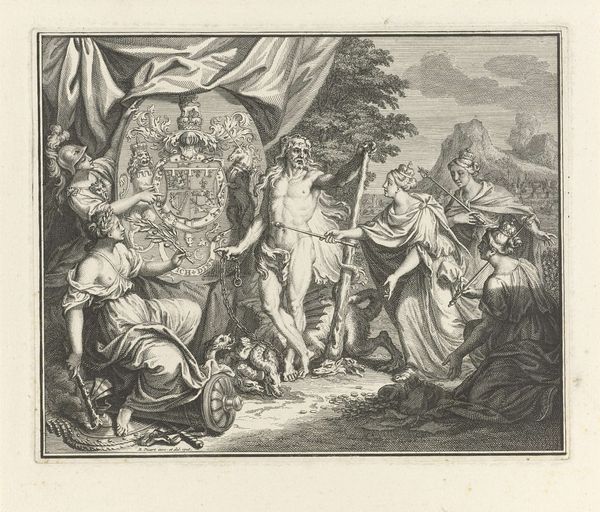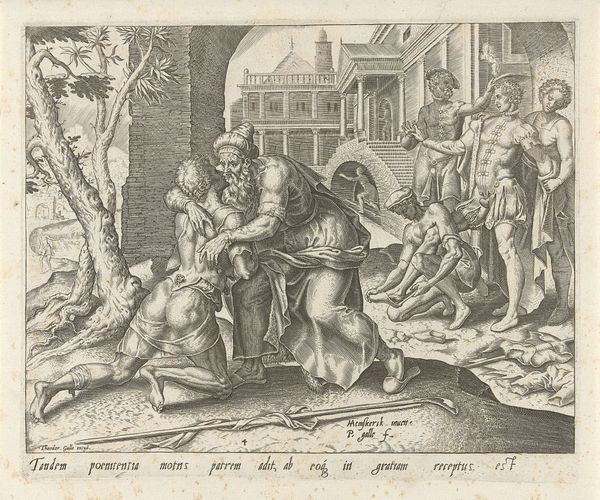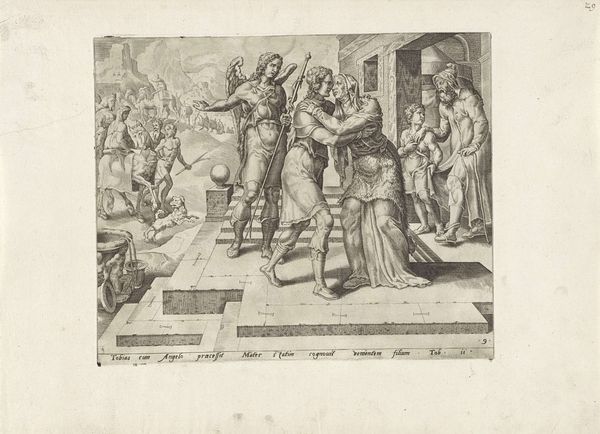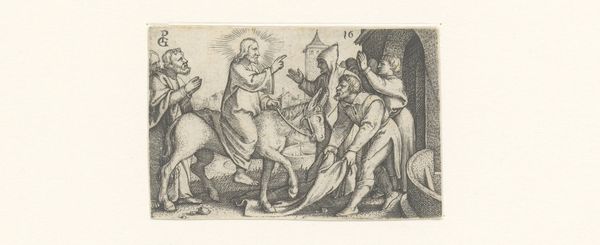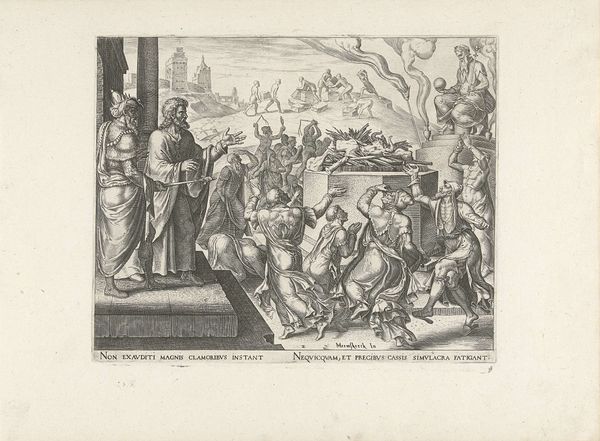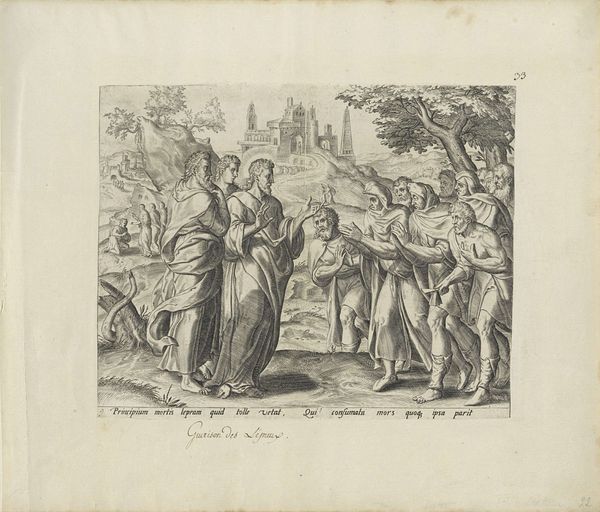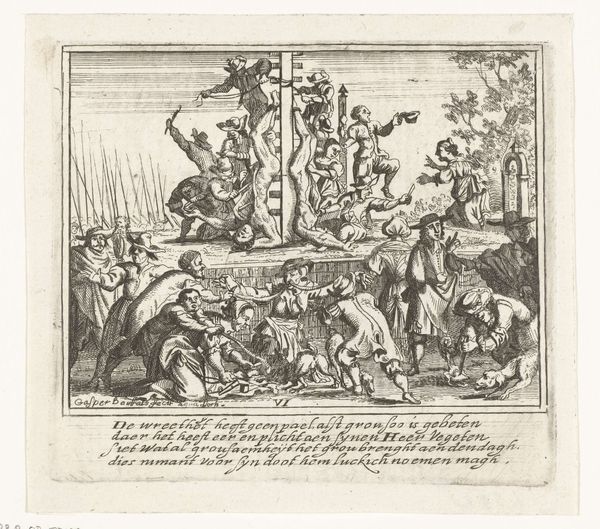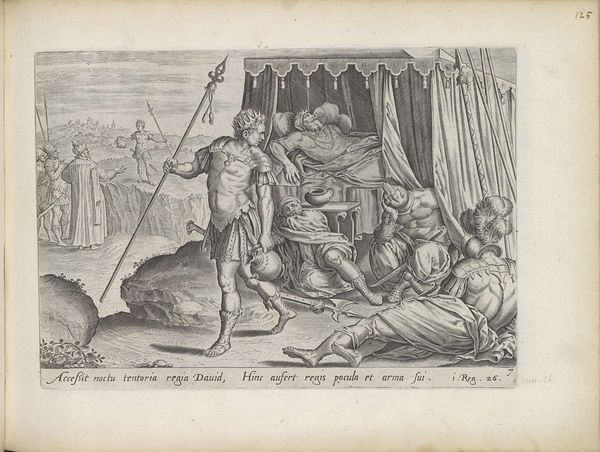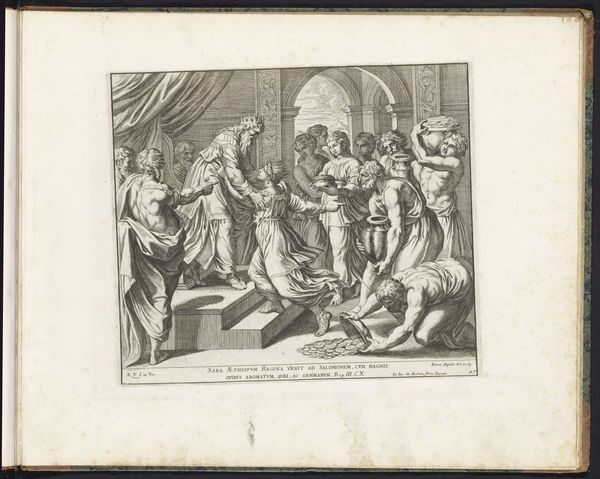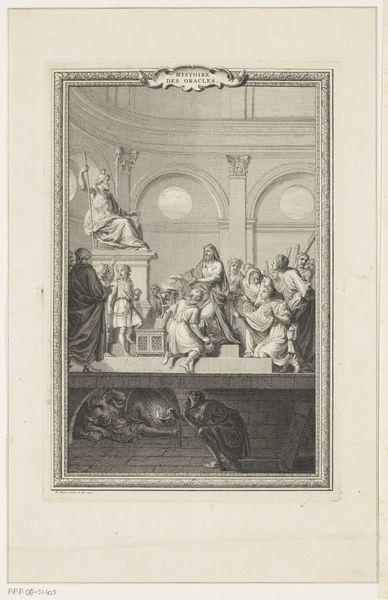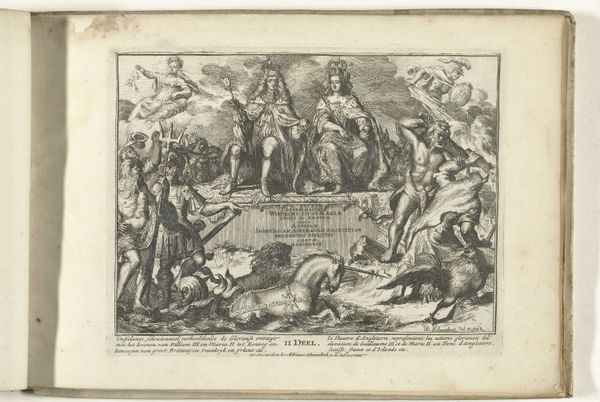
Circe verandert Odysseus´ metgezellen in zwijnen c. 1636 - 1670
0:00
0:00
crispijnvandeiipasse
Rijksmuseum
print, engraving
#
baroque
# print
#
figuration
#
history-painting
#
engraving
Dimensions: height 167 mm, width 228 mm
Copyright: Rijks Museum: Open Domain
Crispijn van de Passe II created this engraving, "Circe verandert Odysseus' metgezellen in zwijnen", sometime in the 17th century. It depicts an episode from Homer's Odyssey, in which the sorceress Circe transforms Odysseus's men into swine. The print was made in the Netherlands, a place and time in which the rise of humanism led artists to explore classical literature. It's worth considering how this image, produced for a print market, participates in a broader cultural landscape where classical stories were being re-evaluated and re-imagined through a Christian lens. Van de Passe's engraving doesn’t merely illustrate a story; it interprets it through the visual language available to him at the time. The transformation of Odysseus’s men becomes a potent symbol, perhaps of moral degradation. Understanding this print means delving into the intellectual and artistic debates of the 17th century. Examining the Dutch print market, the circulation of classical texts, and the evolving role of art in shaping moral and intellectual life. The artwork serves as a lens through which we can examine the complex interplay between art, culture, and society.
Comments
No comments
Be the first to comment and join the conversation on the ultimate creative platform.
